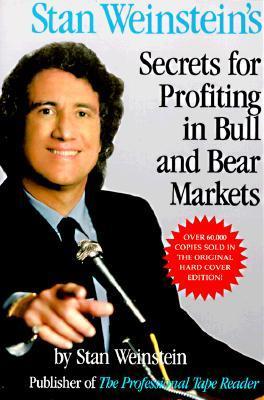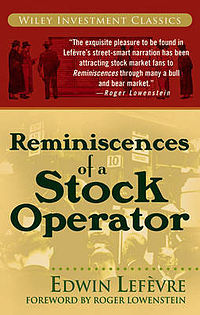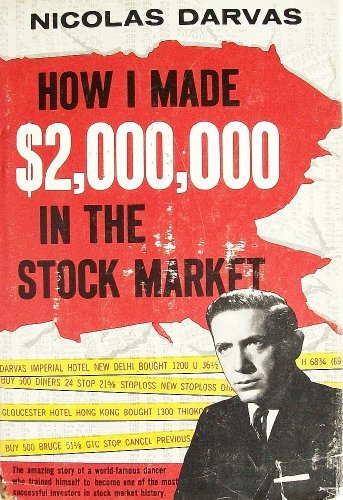I recently had the opportunity to do another great interview with the The Next Bull Market Move. In this interview we discussed the current uranium bull market and lessons from the last uranium bull market. We talked about taking losses and how they play a key role in successful trading. We also discussed dealing with emotions in trading and some of my favorite trading books. I would highly encourage checking out some of the recent interviews from The Next Bull Market Move on the uranium market.
This week I caught up with my good friend Justin from the next big trade.com. We talked about the Uranium market, how to deal with the pain of a trade going against you, and a few books that he would recommend to investors. Enjoy!
A couple of weeks ago I talked to Rick Rule about how to deal with the ‘pain’ of a trade going against you. So how do you deal with the psychology of that kind of pain in trading?
I’ll divide the answer to this question into two parts: the pain of big losses and the pain of small losses. If you’re suffering the pain of a big loss then you are violating one or more of what I consider to be the 3 keys to success in trading.
The 3 keys are: having a trading system, the system must outline a strategy for producing big winning trades and managing small losing trades, and having the discipline to follow the system.
If you’re dealing with the pain of a big loss I would look at it more like a failure of your trading strategy that needs to be addressed if you want to be successful as a trader.
It’s just mathematically too hard to overcome big losses and be a profitable trader. In my opinion minimizing losses is the most important ingredient and what separates winning traders from losing traders.
Now small losses are a part of winning trading, but taking small losses is extremely hard for the average person to learn to do. That’s why small losses often become big losses and end up making it hard for people to become profitable traders.
Taking partial profits into strength is one way to reduce the impact of pullbacks in bull markets. If you’re 100% invested in a sector that has been doing well, a 20-30% pullback which is normal in bull markets will have a big impact on your portfolio.
If you took partial profits and you’re only 50% invested when the pullback comes, then it only affects your total portfolio by 10-15%, which is a much more manageable situation.
Instead of focusing on taking a small loss you can look at it strategically as well as it is an opportunity to put cash back in your portfolio for future trades. If you don’t take the loss and let the losing position grow you are actually reducing both your ability to take advantage of new opportunities and the cash you have to use for that opportunity.
Your recent video (which is excellent – click here to view) goes through the lessons that were learnt in the last Uranium bull market, can you give us an overview of the critical things that were needed to profit from that bull market?
I think it again goes back to the keys to success: having a system and the discipline to follow the system. If you were using Stage Analysis to trade that bull market for example you would have gotten your Stage 2 breakout buy signal very early in the bull market. That puts you in position to profit from the large gains that usually occur at the start of bull markets.
From there your system should outline how you exit the market, whether you sell into strength or sell into weakness to protect profits. For selling into strength I would advocate making it a partial sale so you can hold onto your winner as long as possible. The discipline to hold in a bull market is probably the most important element to success and the hardest thing for a trader to do.
The undisciplined traders who lose money in bull markets usually buy too late in the bull market up leg. Then they sell at a loss when the bull market is pulling back and consolidating gains. Or more catastrophically after the bull market ends and transitions into a bear market.
Are we now back in a bull market for Uranium and the gold and silver mining stocks?
From a Stage Analysis perspective we are in a well-defined bull market in uranium. For gold and silver we are in Stage 1 with the potential to break out into Stage 2. A few things are working against gold and silver right now though, the U.S. dollar is still in a Stage 2 uptrend and stock markets all around the world are in Stage 2. Gold and silver usually perform best when stocks and the U.S. dollar are falling. Things can change rapidly though such as what has happened with the uranium sector over the past few months.
I know you’re a big reader, so which books would you recommend investors to check out? And what have you read recently that’s been interesting?

First if you are lost and looking for a simple system to trade the markets, I would recommend above anything else Stan Weinstein’s book Secrets For Profiting in Bull and Bear Markets. And even if you’ve read it I would recommend reading it again because it contains too much wisdom to be digested in one reading.

From there I would turn to anything about Jesse Livermore, I like Reminiscences of a Stock Operator and other lesser known books such as Jesse Livermore: World’s Greatest Stock Trader and How To Trade In Stocks. I also really like How I Made 2 Million In The Stock Market by Nicholas Darvas.

There’s actually a lot of similarity between Weinstein, Livermore, and Darvas in that they all came to realize trading price action and having a system for minimizing losses are the keys to success. With Livermore and Darvas in particular through these books you get to see the journey and how they learned from losing money in the markets to ultimately become successful.
For a recent book I would recommend Mark Minervini’s book Trade Like A Stock Market Wizard. The last 2 chapters in the book are some of the best material on managing risk and minimizing losses that I’ve read.
In my opinion, the biggest battles in investing are all to do with yourself. To be successful you must control your emotions, be patient, but also be flexible if things go against you and your thesis turns out to be incorrect. Would you agree with this?
Without a doubt. Emotions are what ultimately defeat most people when it comes to investing. They can’t take the pain of a small loss so it becomes a big loss. They can’t stand the jealousy of watching other people make a bunch of money in a bull market, so they buy in late and get trapped when the market tops out and goes against them. They don’t have the discipline to be patient and hold onto a winning trade for fear of the profits disappearing in the future.
Fear and uncertainty are always working against you which is why if you don’t have a plan you are more setup to become a victim of your own emotions. If you have a plan you can always look at it when your judgement becomes clouded and let it help you make the right decision.
And finally, what’s markets are you looking at that might do well for the rest of this year?
Right now obviously I’m keen on the uranium sector, but if you would have asked me more than a few months ago uranium was completely off my radar. So that’s how quickly a market can change and bear markets can end and give birth to new bull markets.
Besides uranium I’m watching for the end of bear markets in agriculture and solar stocks. I’m also paying close attention to different areas of the tech sector such as cyber security and fiber optics related stocks. Overall though I’m not trying to forecast anything, just seize opportunities when they arise using the Stage Analysis system.
Thank you very much Justin.
I highly recommend visiting Justin’s site at https://www.nextbigtrade.com/